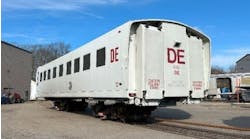To round out National Infrastructure Week (May 16 – 23) VTA is highlighting critical transportation infrastructure projects that have been delivered throughout Santa Clara County. Transportation infrastructure enhances our local and regional economy, quality of life, safety, and the strength of the community.
Last but certainly not least is VTA’s BART Silicon Valley Berryessa Extension. The $2.3 billion extension of the regional Bay Area Rapid Transit (BART) commuter rail line remains on budget and several months ahead of schedule. By late 2017, the largest public works project in VTA and Santa Clara County history will open its doors to passengers.
Santa Clara County residents have expressed a desire for a regional transit connection into Silicon Valley since the late 1990s. In 2000, voters approved a 30-year, half-cent sales tax to pay for the extension. A major investment study in 2001 showed extending the BART line to Milpitas, San Jose and Santa Clara offered an optimal option for relieving congestion and providing an environmentally-friendly commute alternative to the highly congested Interstate 880 and 680 corridors. The first 2-station, 10-mile phase runs from the future BART Warm Springs Station in Fremont to just north of downtown San Jose.
For every $1 spent on construction, operations and maintenance, VTA estimates $4 to $10 will be reinvested into the region. That includes new businesses, offices and retail space; access to better paying jobs; and for employers, a larger labor pool and skill set, adding about 500,000 people to its job market.
The Silicon Valley extension is already spurring a tremendous amount of transit-oriented, mixed-use development around its stations. More than 40 percent of the parcels and property adjacent to future BART stations have turned over and are being converted to higher-density housing units.
The rail line runs underneath or above roadways so, when operational, BART will not conflict with vehicular, bicycle or pedestrian traffic. Both the Milpitas and Berryessa BART Stations will be multimodal, offering connections to express and rapid bus service and VTA light rail in Milpitas. Construction is 80 percent complete and, come later this year, BART will begin testing trains and system integration.



